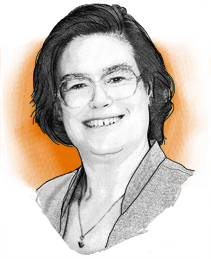December 28, 2017 PAO-M12-17-NI-040
Unless cell biologists have access to expensive, complex and specialized microscopy systems and the training and skills required to use them, they often struggle to achieve the high level of resolution needed to view single molecules and their complex interactions. The DNA-PAINT molecular imaging technology being developed at the Wyss Institute of Biologically Inspired Engineering at Harvard University could change that.
DNA-PAINT, which uses transient DNA-DNA interactions to accurately localize fluorescent dyes with super-resolution, is being developed by Ralf Jungmann, Ph.D., an alumnus of the Wyss Institute and currently a Professor of Biochemistry at the Ludwig Maximilian University (LMU) and the Max Planck Institute (MPI) in Germany and Wyss Institute Core Faculty member Peng Yin, Ph.D.
The technology relies on attachment of a DNA “anchor strand” to the molecule of interest followed by transient attachment of a dye-labeled DNA “imager strand” with a complementary sequence to the anchor, which produces a fluorescent signal. The signal is viewed as a defined blinking event at single molecular sites. The “blinking frequency” is precisely tunable, making it possible to tell molecules apart from one another, even when they are separated by nanometers.
Initially, the technology could be used to visualize ingle biomolecules such as proteins in fixed cells at a fixed close distance, but could not see molecules deep inside of cells. Jungmann and Yin recently reported that the DNA-PAINT technology has been adapted to confocal microscopes, instruments that are commonly used to image whole cells and thicker tissues at lower resolution. By combining DNA-PAINT with confocal microscopy (referred to as SDC-PAINT), the researchers were able to visualize different molecules, including combinations of different proteins, RNAs, and DNA throughout the entire depth of whole cells at super-resolution.
SDC comes from “Spinning Disk Confocal” microscope, an instrument that detects fluorescence signals from an entire plane all at once by sensing them through a rotating disc with multiple pinholes. Three-dimensional super-resolution is achieved with the placement of an additional lens in the detection path that allows sub-diffraction-limited resolution in the third dimension to be archived, according to Florian Schueder, a Graduate Student working with Jungmann, who also worked with Yin’s Wyss Institute team as part of his master’s thesis.
Manufacturers of SDC microscopes can easily customize their instruments with this super-resolution capability, according to Jungmann: “SDC-PAINT integrates the versatile super-resolution capabilities of DNA-PAINT with the optical sectioning features of confocal microscopes. We thus created the means to explore the entire depth of a cell, and to visualize the molecules within it at the nanometer scale. We basically implement super-resolution microscopy without complex hardware changes to microscopes that are generally available to cell biologists from all venues of biomedical research. The approach thus has the potential to democratize super-resolution imaging of whole cells and tissues.”
In addition to mapping the presence of different proteins within whole cells, the researchers also visualized different types of individual biomolecules in the chromosome-containing nucleus, including sequences in the DNA, proteins bound to DNA or the membrane that encloses the nucleus, as well as nuclear RNAs, according to Yin, who is also co-leader of the Wyss Institute’s Molecular Robotics Initiative, and Professor of Systems Biology at Harvard Medical School.

Dr. Challener is an established industry editor and technical writing expert in the areas of chemistry and pharmaceuticals. She writes for various corporations and associations, as well as marketing agencies and research organizations, including That’s Nice and Nice Insight.